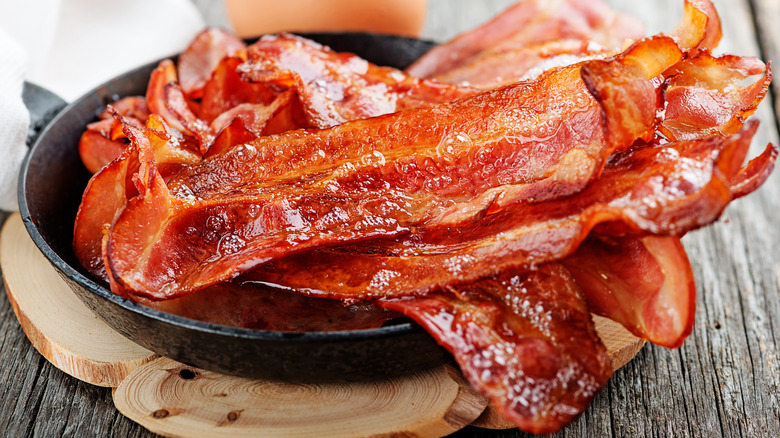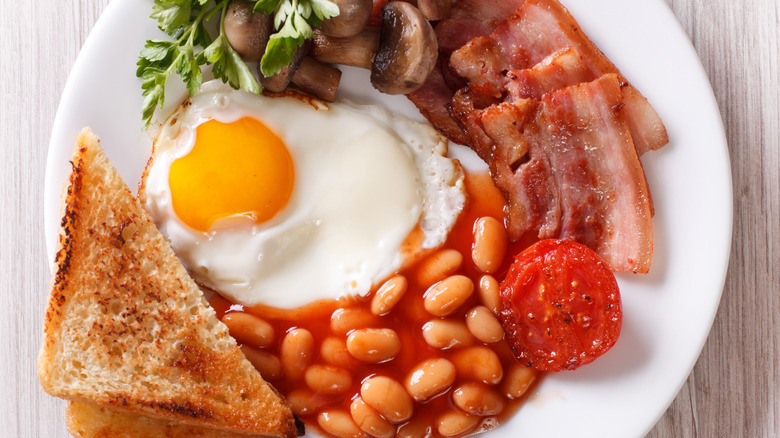The Real Difference Between American, Canadian, And British Bacon
Mmm...bacon. Statistics show that 67 million Americans ate at least two pounds of bacon in 2019, with another 18 million claiming to have eaten five pounds or more (via Statista). Beyond being irresistibly delicious, what is bacon? Taken from a pig's belly or back, bacon in America is a fatty portion of pork that is cured, and often smoked, before being sliced and packaged for sale.
Bacon production involves many steps, including curing, smoking, and adding chemicals and nitrates. And, while bacon isn't the healthiest meat in the world, there are healthier ways to cook bacon, such as in the oven or on a grill. What many don't realize is that the bacon we enjoy here in America is different from Canadian and British bacon. Not only does the bacon have different names, but the pork for Canadian and British bacon even comes from a different part of the pig.
How is American bacon different from Canadian and British bacon?
Canadian bacon, which you may have seen in the grocery store, or tried on an eggs Benedict, is leaner than traditional American bacon (via The Kitchn). The meat for Canadian bacon is taken from a pig's back, or loin, which doesn't have the same fat content as the belly. It tastes similar to ham, and Canadians do not call it Canadian bacon, but rather back bacon, or peameal, if it's rolled in yellow peameal (via Eat North).
British bacon, or rashers, are a genius blend of American and Canadian bacon. British bacon features some of the back meat (or loin) and some of the belly meat, providing lean protein and flavorful fat all at once (via The English Breakfast Society). Commonly referred to as back bacon, flavorful British bacon is enjoyed most with a traditional English breakfast. No matter which type of bacon you pick or how you choose to incorporate bacon into your meal planning, it's guaranteed to be a crowd favorite.

